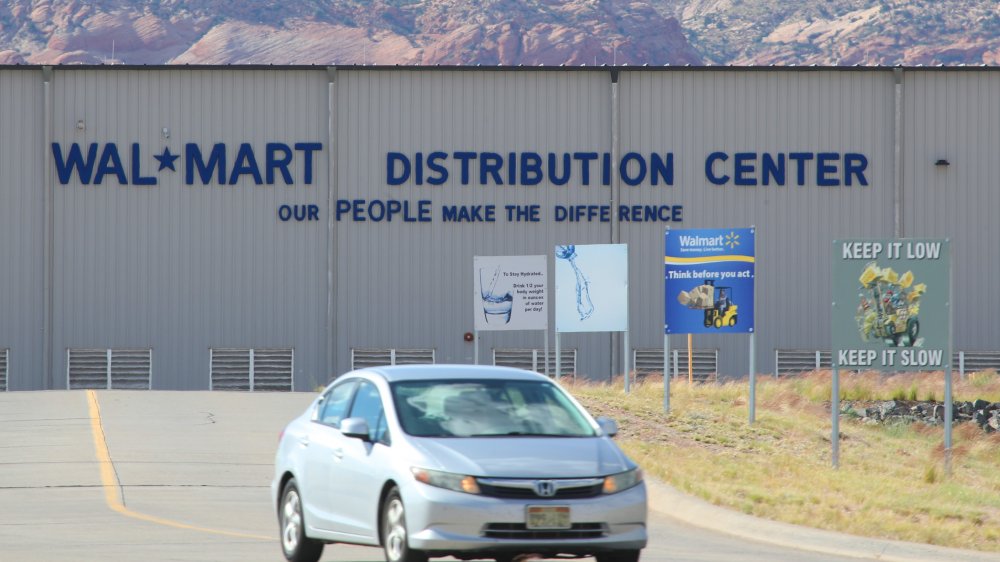Why Walmart's New Instacart Partnership Is A Game-Changer For Shoppers
Americans buy more groceries at Walmart than anywhere else (via Food Industry). If a test-run of a new partnership between Walmart and Instacart works out, then those millions of Walmart customers will be able to do their shopping from home using the nation's largest grocery delivery service.
Instacart has started delivering Walmart groceries in four U.S. cities: Los Angeles, San Francisco, and San Diego, California; and Tulsa, Oklahoma (via CNBC). No word yet on when Instacart might start delivering Walmart groceries in other U.S. cities. In addition to groceries, Instacart shoppers will pick up electronics, home decor, and personal care items, and will deliver them in as little as one hour, an Instacart spokesperson told CNBC. The partnership has already proven successful in Canada, where Instacart serves 190 Walmart stores (via Walmart Canada).
Walmart's relationship with Instacart might be new in the U.S., but the retail giant isn't new to grocery delivery. Walmart rolled out grocery delivery in a big way in 2018, at the time using unnamed third-party delivery services (via Walmart). By the end of 2019, Walmart grocery delivery was available from 1,600 of its 5,300 U.S. stores, thanks to several delivery services, including Point Pickup, Skipcart, AxleHire, and Roadie. Walmart was even using its own employees in 2019 to deliver groceries not just to your door but straight into your refrigerator. (Safe to say, that particular experiment in delivery service was abandoned by the time the COVID-19 pandemic started.)
Walmart is gaining ground on Amazon in the online business
Clearly, Walmart is still trying to figure out how best to play the online-delivery game. For that matter, every one of the traditional brick-and-mortar companies are relative newcomers to this game, which Amazon created in the 1990s and grew into a trillion-dollar business (via MarketWatch). Traditional retailers have proven to be capable of giving Amazon a run for its money. Amazon's 42.1 percent share of overall online sales in January 2020 dipped to 38.5 percent in June, as Amazon struggled to keep customers happy during the unexpected surge in business resulting from the pandemic (via The Washington Post). Walmart (5 percent market share in June) and Target (3.5 percent) took advantage and grabbed some of Amazon's business.
Walmart's decision to go with Instacart suggests the company may be settling into a long-term delivery strategy. Instacart, you might say, is the Walmart of delivery services, with a 57 percent share of that particular business (via Food On Demand). Instacart already works with most of the other big grocers, including Kroger, Target, and Costco.
Amazon isn't resting on its laurels while its competitors try to play catch-up. Amazon reportedly has a plan to convert mall spaces previously occupied by Sears and JC Penney into fulfillment centers (via the New York Post). This would enable Amazon to be more conveniently located for its customers, something like Walmart with its thousands of stores.

